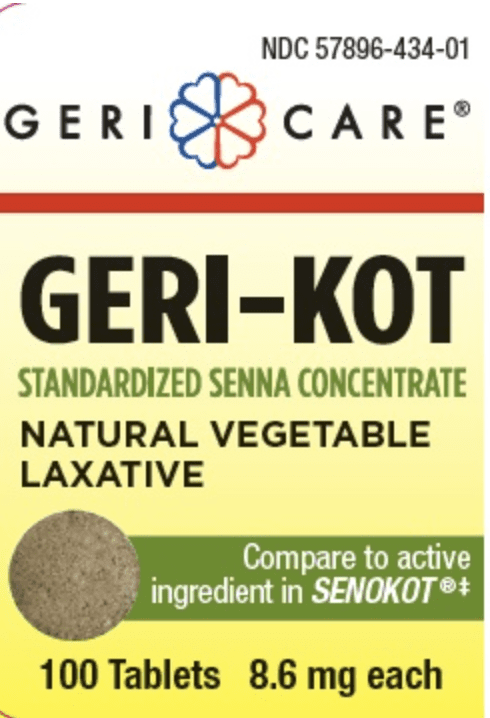Geri-Kot Disease Interactions
There are 4 disease interactions with Geri-Kot (senna).
Laxatives (applies to Geri-Kot) inflammatory bowel disease
Major Potential Hazard, High plausibility.
The use of laxatives is contraindicated in patients with inflammatory bowel disease. Patients with inflammatory bowel disease may experience colonic perforation with use of stimulant laxatives.
Laxatives (applies to Geri-Kot) intestinal obstruction disorders
Major Potential Hazard, High plausibility. Applicable conditions: Gastrointestinal Obstruction
The use of laxatives is contraindicated in patients with intestinal obstruction disorders. Patients with intestinal obstruction disorders may need their underlying condition treated to correct the constipation. Some laxatives require reduction in the colon to their active form to be effective which may be a problem in patients with intestinal obstruction.
Stimulant laxatives (applies to Geri-Kot) acute surgical abdomen
Major Potential Hazard, High plausibility. Applicable conditions: Appendicitis
The use of stimulant laxatives is contraindicated in patients with or who may have acute surgical abdomen or appendicitis. These patients may be candidates for emergency surgery. Stimulant laxatives should also not be administered to patients with abdominal pain, particularly if the cause has not been determined.
Stimulant laxatives (applies to Geri-Kot) rectal bleeding
Major Potential Hazard, Moderate plausibility.
The use of stimulant laxatives is contraindicated in patients with anal or rectal fissures. These preparations may cause irritation, burning sensation, and proctitis.
Switch to professional interaction data
Geri-Kot drug interactions
There are 220 drug interactions with Geri-Kot (senna).
More about Geri-Kot (senna)
- Geri-Kot consumer information
- Check interactions
- Compare alternatives
- Pricing & coupons
- Drug images
- Latest FDA alerts (3)
- Side effects
- Dosage information
- During pregnancy
- Drug class: laxatives
- Breastfeeding
- En español
Related treatment guides
Drug Interaction Classification
| Highly clinically significant. Avoid combinations; the risk of the interaction outweighs the benefit. | |
| Moderately clinically significant. Usually avoid combinations; use it only under special circumstances. | |
| Minimally clinically significant. Minimize risk; assess risk and consider an alternative drug, take steps to circumvent the interaction risk and/or institute a monitoring plan. | |
| No interaction information available. |
See also:
Further information
Always consult your healthcare provider to ensure the information displayed on this page applies to your personal circumstances.


